NEWS: Bids roll in for Santee Cooper as General Assembly mulls its fate
NEWS BRIEFS: McMaster makes bold education promises, Senate changes, more
TALLY SHEET: More than 100 bills filed this week
COMMENTARY, Brack: New book offers key insights for political, conservation success
SPOTLIGHT: AT&T
MY TURN, Smith: Democrats need to tell their story better by rebranding
FEEDBACK: Use funds in rational way after figuring out what’s needed
MYSTERY PHOTO: Beautiful sunset
S.C. ENCYCLOPEDIA: Artist Jonathan Green
NEWS: Bids roll in for Santee Cooper as General Assembly mulls its fate

By Lindsay Street, Statehouse correspondent | Exactly what state-owned Santee Cooper could look like as 2020 approaches is still up in the air. But state lawmakers are vowing significant changes are ahead for the 85-year-old public utility.
There are a range of options on the table from reforming the utility to outright sale. The legislature is accepting offers to manage, buy or buy parts of Santee Cooper until Jan. 14.
“Either we are going to make some reforms to current Santee Cooper and they will continue to operate … or possibly we could do what the governor is advocating, sell them but not the lakes,” Orangeburg Democratic Sen. Brad Hutto said. He is one of nine lawmakers on a panel evaluating the sale of Santee Cooper.
- Past news coverage: Sell Santee Cooper? Maybe, but not as a fire sale, senators say (Dec. 8, 2017)
Santee Cooper has been in legislative crosshairs for 18 months for its minority role in a $9 billion nuclear project that was canceled in 2017. The utility was in a partnership with S.C. Electric and Gas before the project was shuttered before completion. While SCE&G preemptively raised rates to pay for the project, Santee Cooper incurred debt for its share.
Gov. Henry McMaster has actively pushed for the sale of the utility but there was no mention of selling Santee Cooper as a priority this session during his inaugural address Wednesday.
Privatization of the state-owned utility is complicated by its debt and the utility’s other sprawling assets, which include two lakes, hydropower plants and water treatment plants.
Whatever decision is made ultimately, it could take months to a year for anything to be finalized, sources say.

Charleston Republican Sen. Paul Campbell, who is also on the Santee Cooper committee, said the 2019 legislative session will chart Santee Cooper’s future.
“It may take a while to close a deal but, my opinion is we will have a solution hopefully by the end of the legislative session,” Campbell said. “I want to have a direction by the end of this legislative term.”
But education could take priority over Santee Cooper, other lawmakers warn.
“I don’t think there is any appetite to have Santee Cooper rise up and knock education off of the pedestal for the year,” Hutto said. “There’s no imminent crisis at Santee Cooper. It’s not necessarily a good situation, but it’s manageable.”
The bids on the table
The state is currently accepting bids for state-owned utility, which employs about 1,650 people, manages two lakes, and helps the state with economic development. So far, a half dozen bids have been received since bidding opened in the fall, according to lawmakers familiar with the bidding process.

“Some would like to manage it, some would like to own it, and some would like to own part of it,” Hutto said. “There’s a lot of interest at some level.”
A report will be made by lawmakers after bidding closes this month.
In November, a panel of lawmakers approved a set of criteria for evaluating would-be buyers of the utility through an outside consulting firm ICF International of Virginia. Criteria include a competitive pricing and keeping rates low. There is also a weighted scale for evaluating buyers to help lawmakers determine the best offer. Lawmakers have also said they want to keep the utility headquartered in Moncks Corner and keep Lake Marion and Lake Moultrie as public lands.
Among the bids are at least two from the Electric Cooperatives of South Carolina, CEO Mike Couick told Statehouse Report. Central Electric Power Cooperative, which is represented by ECSC, is Santee Cooper’s largest customer, representing 59 percent of the utility’s revenues. Dominion Energy of Virginia, which purchased South Carolina Electric and Gas this month, is also reportedly a bidder.
By state law, only the General Assembly can sell Santee Cooper — a measure put in place after then-Gov. Mark Sanford moved to sell the utility in 2006. Santee Cooper and its employees are not allowed to lobby for or against the sale according to Mollie Gore, manager of corporate communication at Santee Cooper. But in a Nov. 27 investor presentation to lawmakers, officials wrote:
“Santee Cooper believes that it provides substantial value to the state and its customers through reliable and competitively priced power.”
A brief history of Santee Cooper
 Santee Cooper was created in 1934 to bring electricity to rural parts of the state during a time when utility providers had little economic incentive to bring service, Gore said. The first generating station, the Jefferies Hydroelectric Station at Pinopolis lock near Moncks Corner, began generating electricity in 1942. The utility is one of a score of state-owned utilities remaining in the nation.
Santee Cooper was created in 1934 to bring electricity to rural parts of the state during a time when utility providers had little economic incentive to bring service, Gore said. The first generating station, the Jefferies Hydroelectric Station at Pinopolis lock near Moncks Corner, began generating electricity in 1942. The utility is one of a score of state-owned utilities remaining in the nation.
The utility has 180,000 retail customers, many of whom are in Horry and Berkeley counties. Its largest customer is Central Electric Power Cooperative, which is comprised of 20 cooperatives in the state. With power sales in all 46 counties, Santee Cooper is the state’s largest electricity provider and one of the largest electricity generators, Gore said.
The utility also provides water to communities in Berkeley and Dorchester counties, manages thousands of acres of land and two lakes, and works as an arm for economic development in the state.
In the 1990s, Santee Cooper developed Mount Holly, which eventually landed a database farm for Internet search giant Google. When Volvo sought to locate in the United States, Santee Cooper purchased the giant tract known as Camp Hall and carved off a portion for the automaker. The rest of the site is being sold for similar support industries. The utility also offers economic development loans and grants, doling out more than $110 million since 2010.
Santee Cooper took out $4 billion in bond debt tied to the V.C. Summer nuclear project, bringing its total debt to more than $8 billion, according to 2017 numbers. About 79 percent of that debt is tax-free due to Santee Cooper’s public utility status, Gore said.
In a November 2018 investor presentation to the legislative committee, Santee Cooper officials wrote:
“If Santee Cooper were sold, a condition precedent to the closing of such a sale would be the retirement or defeasance of all outstanding debt, both tax-exempt and taxable.”
In 2017, Santee Cooper’s annual revenue was $1.76 billion. That same year, the utility generated 23,000 gigawatt hours (a gigawatt is one billion watts; that’s about 230 billion 100-watt light bulbs being powered for one hour). It’s assets are totaled at $13.2 billion.
What lawmakers say
Berkeley County Republican Sen. Larry Grooms, whose district includes Santee Cooper, offered caution for the utility’s privatization last year.

“Santee Cooper has proven itself to be one of our state’s greatest assets,” Grooms wrote via text in December 2017. “In addition to providing low-cost, reliable electricity for over 2 million South Carolinians, this agency is the economic (engine) responsible for attracting high-quality, high-paying industries like Nucor, BP, Google and Volvo to our area … I’ll be waiting in the Senate to kill such a foolhardy proposal should one ever make it that far.”
When reached this year to see if his views had changed, he wrote via text: “I am not going to comment on Santee Cooper. Loose lips sink ships.”
Hutto and Campbell both said the future of Santee Cooper is unknown at this time, though they both expect to have an answer by the end of February.
“Things are going to change for sure,” Campbell said. He added that he was confident that the General Assembly would be capable of “multitasking” on reforming education and dealing with the question of Santee Cooper this year.
Hutto said he and other lawmakers are being “methodical” in their approach to restructuring or selling the utility.
“It will be up to us in how we structure that into a report (for other lawmakers),” Hutto said. “We are going through that process now.”
Several bills seeking to reform Santee Cooper or provide additional oversight for the utility failed in the 2018 legislative session.
- Have a comment? Send to: feedback@statehousereport.com
NEWS BRIEFS
McMaster makes bold education promises, Senate changes, more
By Lindsay Street, Statehouse correspondent | In an inaugural address laced with many sports metaphors, Gov. Henry McMaster pushed education to the top of his agenda while talking up the state’s economic development and ensuring environmental protections.
![]() “My game plan for South Carolina requires changing our offensive plays on education. It means putting a strong defense on the field that tackles regulations, keeps high taxes off the field and protects our environment like it is the end zone,” McMaster said Wednesday on the Statehouse steps.
“My game plan for South Carolina requires changing our offensive plays on education. It means putting a strong defense on the field that tackles regulations, keeps high taxes off the field and protects our environment like it is the end zone,” McMaster said Wednesday on the Statehouse steps.
McMaster said three things create a well-educated South Carolina: strong family, job and education. He further pledged that “the words ‘Corridor of Shame’ will soon be a fading memory.”
In other news:
Senate elects first president. The S.C. Senate has a new presiding officer, the president of the Senate. Cherokee County Republican Sen. Harvey Peeler was elected as the Senate’s first president. Also this week, the Senate Judiciary Committee sent to the floor a bill that would restrict the governor’s ability to make appointments while the Senate is in recess.
S.C. relies, but not heavily, on federal funds. South Carolina’s federal aid represents 30.9 percent of its revenues, according to a new report from the Tax Foundation. The report lists South Carolina as the 33rd for its reliance on federal funds (with 50 being the least reliant; that was Virginia). The most reliant states included Mississippi, Louisiana, New Mexico, Arizona, and Kentucky. Read more here.
Senate not in session next week. The Senate won’t meet next week as a body. The Senate will continue to meet in committees, however. See the full calendar here.
Weekly update on Palmetto Priorities
 Throughout the legislative session, we’ll provide you relevant updates related to our list of Palmetto Priorities, 10 big policy areas where major progress is needed for South Carolina to escape the bottom of lots of lists. Over the last week:
Throughout the legislative session, we’ll provide you relevant updates related to our list of Palmetto Priorities, 10 big policy areas where major progress is needed for South Carolina to escape the bottom of lots of lists. Over the last week:
Gun reform. Several bills have been introduced in the House and Senate since session began this week. H. 3456 (Hill) seeks passage of the S.C. Constitutional Carry Act to remove concealed weapons provisions from state law and to loosen restrictions on carrying weapons, with several provisions. S. 341 (Campsen) would require every clerk of court to report to state police within 10 days of disposition of each case in general sessions, and report within 48 hours the issuance of a restraining order or other order preventing the possession of a firearm. H. 3058 (Cobb-Hunter) would require a national, instant criminal background check prior to any transfer of firearms.
Poverty. H. 3461 (Robinson) was introduced in the House in an effort to create the Poverty Elimination Bank. The bill would create a system where voluntary contributions can be made by individuals via income tax returns.
Taxes. H. 3048 (S. Davis) would create an annual budget estimate that looks at cost savings and efficiency recommendations to the governor.
Health care. Introduced this week, H. 3037 (Garvin) is a resolution that would create a statewide referendum during the 2020 general election on whether the state should participate in Medicaid expansion. There is a similar bill in the Senate (S. 36). Two other bills seek to create Medicaid expansion in the state: H.3281 would create straight Medicaid expansion as allowed under the Affordable Care Act; and H.3292 would require the state expand coverage like Arkansas did, by paying premiums for the expansion population to buy coverage through the private insurance marketplace.
Other health-care related items this week included:
- 3020 (McCravy) seeks to enact the “South Carolina Fetal Heartbeat Protection from Abortion Act.”
- A study was released on the state’s effort to enact work requirements for Medicaid beneficiaries. The study says up to 14,000 mothers could lose coverage under the proposed requirements. Read more here.
- In the Senate, a medical marijuana research resolution has advanced to Senate Medical Affairs committee. The resolution urges Congress to allow more medical research on cannabis.
Corrections. The Post and Courier reported that hundreds of millions in upgrades are needed to keep prison guards and inmates safe in state institutions. Read the report here.
Roads. The S.C. Department of Transportation launched its “Pothole Blitz” this week, asking people to report potholes around the state. Call 855-467-2368 to report potholes.
Politics. A bipartisan bill has been introduced in the House that would create an independent redistricting commission for the decennial census and the resulting redrawing of legislative districts (H. 3054). Also: H. 3039 (Henegan) would allow members of the House to face election every four years instead of every two years.
Looking ahead
Click below for other items coming up in the Statehouse:
- House calendar
- Senate calendar
- Have a comment? Send to: feedback@statehousereport.com
TALLY SHEET: More than 100 bills filed this week
![]() Members of the General Assembly filed more than 100 bills during the first week of the new legislative session to bring to 800 the number filed since December. Among the highlights:
Members of the General Assembly filed more than 100 bills during the first week of the new legislative session to bring to 800 the number filed since December. Among the highlights:
IN THE HOUSE
No dash cam videos. H. 3448 (Taylor) calls for exempting dash cam videos by law enforcement from the state Freedom of Information law and creating a state Office of Freedom of Information Act, with several provisions and remedies.
Juvenile offenders. H. 3450 (Rutherford) seeks a constitutional amendment to require separate confinement for juvenile offenders, with several provisions.
Loan forgiveness. H. 3452 (Robinson) seeks student loan forgiveness for some K-12 teachers.
Guns. H. 3456 (Hill) seeks passage of the S.C. Constitutional Carry Act to remove concealed weapons provisions from state law and to loosen restrictions on carrying weapons, with several provisions.
Eliminating poverty. H. 3461 (Robinson) seeks creation of a Poverty Elimination Bank to fund poverty reduction initiative, with several provisions.
Seat belts on buses. H. 3462 (Robinson) seeks to require lap and shoulder seat belts for students riding school buses.
Minimum wage. H. 3467 (Robinson) seeks a minimum wage of at least $13 or a wage set by the Fair Labor Standards Act, with several provisions.
Pro-offshore drilling. H. 3470 (Burns) seeks to keep the state from approving plans or rules that would stop infrastructure for offshore seismic testing for oil or gas. H. 3471 (Burns) is related.
IN THE SENATE
New holiday. S. 307 (Jackson) seeks establishment of General Election day as a state holiday. S. 308 (Jackson) seeks for state public schools to be closed on Veterans Day.
Clean energy access. S. 332 (Davis) seeks the Clean Energy Access Act to establish rights and rules related to net metering, utilities and regulatory orders related to electrical utilities. There are a lot of complicated provisions with the bill.
Tax returns. S. 339 (Climer) is a bill that would require statewide officeholders and members of the General Assembly to disclose personal tax returns as part of the state’s Statement of Economic Interests, with several provisions.
Solar energy. S. 362 (Verdin) calls for a solar energy income tax credit, with certain provisions.
BRACK: New book offers key insights for political, conservation success

By Andy Brack, editor and publisher | Conservationist Dana Beach years ago described how to keep development from mauling everything into a mess of sprawl.
 Don’t, he said, talk or write about merely “protecting land.” Instead, use words to conceptualize protecting “special places” in South Carolina. The first approach is kind of clinical and vanilla. It outlines what one wants, but doesn’t link to what someone else may really care about. But the second method connects conservation with a reader’s innate definition of keeping safe his or her own special place, whether it is a spot on a beach, a pristine stretch of river, a favorite area to see birds, a trail in the mountains. In other words, it allows the reader to be involved in framing the concept of what protection means.
Don’t, he said, talk or write about merely “protecting land.” Instead, use words to conceptualize protecting “special places” in South Carolina. The first approach is kind of clinical and vanilla. It outlines what one wants, but doesn’t link to what someone else may really care about. But the second method connects conservation with a reader’s innate definition of keeping safe his or her own special place, whether it is a spot on a beach, a pristine stretch of river, a favorite area to see birds, a trail in the mountains. In other words, it allows the reader to be involved in framing the concept of what protection means.
In a new book that tells 10 conservation success stories in South Carolina over the last 30 years, Beach and his wife Virginia share keys to keeping a lot of the Palmetto State’s special places safe from threats of sprawl, development and, in one sense, human greed.
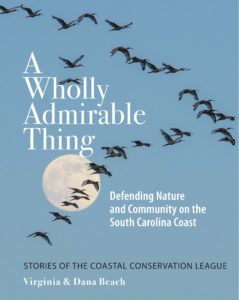 “A Wholly Admirable Thing: Defending Nature and Community on the South Carolina Coast” is more than a remembrance of 30 years of conservation work by Beach and the Coastal Conservation League. It’s a celebration of how people — Republicans, Democrats and political independents — can work together to make South Carolina a better, friendlier place by keeping what attracts us here in first place.
“A Wholly Admirable Thing: Defending Nature and Community on the South Carolina Coast” is more than a remembrance of 30 years of conservation work by Beach and the Coastal Conservation League. It’s a celebration of how people — Republicans, Democrats and political independents — can work together to make South Carolina a better, friendlier place by keeping what attracts us here in first place.
When the League got off the ground just before Hurricane Hugo slammed into South Carolina in 1989, Beach envisioned better laws and state policies, better rules for land use and more public education about the “long-term needs of our coastal environment.”
He didn’t necessarily envision working with affiliated people and groups, such as the Nature Conservancy, Ducks Unlimited, the S.C. Environmental Law Project, the Southern Environmental Law Center and various land trusts, to help to establish a 1.25 million-acre greenbelt of permanently protected Lowcountry land around urban boundaries to safeguard marshes, small islands, maritime forests, birding areas and more.
He didn’t expect the nascent organization to evolve to fight battles over factory hog farms, polluting coal plants, an expanded port or a highway that would have split a national forest. But he and colleagues fought those battles as described in the bulk of the book, which focuses on successes, such as preservation education at the Penn Center on St. Helena Island, saving Sandy Island in Georgetown County, nurturing local farmers to grow and sell $7 million of vegetables through the GrowFood Carolina network, and embracing concepts of new urbanism to bolster density and new ways to live in better harmony with the coast.

“A Wholly Admirable Thing” is a lyrical chronicle of successes for organizing and defending South Carolina’s special places. It’s a tribute to persistence. The book’s stories inspire awe, surely even among detractors who have cursed the League over the years.
But students of politics will also enjoy Dana Beach’s succinct, realistic description of the murkiness and challenges of Palmetto politics in the book’s introduction:
“Politically, South Carolina is bright red; but the state is neither conservative nor liberal, at least by conventional definitions of those terms. Instead it is a pre-modern, tribal society controlled by a network of friendships, kinships and business relationships with power vested in a small leadership clique that migrates across the rural landscape — from Edgefield and Barnwell, St. Matthews to Moncks Corner, Kingstree to Florence. It is a modern manifestation of a corporate state, like those that exist in Eastern Europe.
“Our temperament is one of wounded honor and easily hurt feelings. Just below the good-natured, jovial countenance of a South Carolina leader, lies a tightly wound, tender bundle of emotions waiting to explode.”
It’s much the same today in the legislature as it was 50 years ago or 150 years ago. In some sense, it doesn’t matter whether Republicans or Democrats are in control because what really shapes the state is a continuing heritage of political elites who don’t want to be told what to do. “A Wholly Admirable Thing” is a critical read for anyone who wants to get something actually done.
- Have a comment? Send to: feedback@statehousereport.com.
SPOTLIGHT: AT&T
 The public spiritedness of our underwriters allows us to bring Statehouse Report to you at no cost. Today’s featured underwriter is AT&T Inc.
The public spiritedness of our underwriters allows us to bring Statehouse Report to you at no cost. Today’s featured underwriter is AT&T Inc.
AT&T Inc. (NYSE:T) helps millions around the globe connect with leading entertainment, mobile, high speed Internet and voice services. We’re the world’s largest provider of pay TV. We have TV customers in the U.S. and 11 Latin American countries. We offer the best global coverage of any U.S. wireless provider*. And we help businesses worldwide serve their customers better with our mobility and highly secure cloud solutions.
- Additional information about AT&T products and services is available at http://about.att.com.
- Follow our news on Twitter at @ATT, on Facebook at http://www.facebook.com/att and YouTube at http://www.youtube.com/att.
* Global coverage claim based on offering discounted voice and data roaming; LTE roaming; voice roaming; and world-capable smartphone and tablets in more countries than any other U.S. based carrier. International service required. Coverage not available in all areas. Coverage may vary per country and be limited/restricted in some countries.
MY TURN: Democrats need to tell their story better by rebranding
By Karl Smith, special to Statehouse Report | Democrats have a great product but do not sell it well. Conversely, the Republican Party has a terrible product but sells the heck out of it.
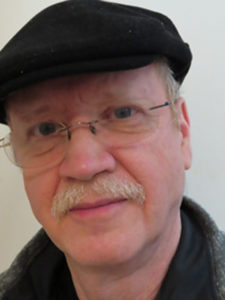
The Grand Old Party has done an amazing job at branding it to be good for the economy and simultaneously branding the Democrats as horrible. Far too many voters voting their wallet will not vote for a candidate with a ‘D’ by the name.
This brand problem for Democrats is more pronounced in South Carolina and other so-called red states, but exists anywhere in the country.
The GOP sells messages that sound good to many voters. For example, the party says the GOP gives more money to the job creators, gets government out of the way and so on. The GOP sells messages that Democrats “give your hard-earned money to the takers,” throw the economy over the cliff and more.
Meanwhile, Democrats sell their policies mostly on morality. They say it is morally right to educate people, provide access to health care and require equal pay for equal work. Democrats say these policies are good for the economy but have never explained how except it puts money into the bottom of the economy that gets spent quickly.
Former President Bill Clinton started talking about the math but did not keep going. Hillary Clinton and House Speaker Nancy Pelosi say, “We think bottom-up economics works.” My head explodes when I hear this! “We think” is not an effective argument against Republican rhetoric that sounds good but does not work. Bottom-up economics works because of fundamental macroeconomic and behavioral principles that are easy to explain!
Democrats generally support policies necessary for people to thrive, for businesses to succeed, for a prosperous and shared economy, for caring for the environment, and for a better future. To accomplish these goals, Democrats support what I call Basic Public Investments (BPI), Valuing-All-Workers (VAW) and Sufficient Regulations (SR). These simple principles are the foundation of a positive economic message for Democrats to directly counter Republican rhetoric to win over more of the voters who do not understand morality arguments.
Basic public investments are foundation for success
To thrive, Americans need quality education, health care, infrastructure, research, safe communities, community development and safety nets which are basic public investments. People do not need just one or a few of these investments. We need all of these BPIs.
Businesses do not exist with just educated workers or only healthy workers or infrastructure or any of the rest of the BPIs. To exist and succeed, American businesses need all of the BPIs.
Wages need to be better
To thrive, people need good wages. The principle of Valuing-All-Workers creates good wages. VAW means supporting a livable minimum wage, equal pay for equal work and workers’ rights. Each initiative drives up wages increasing the buying power of people, which means more customers with more money for businesses.
For businesses to exist and succeed, they need BPIs plus something else — Customers-With-Money (CWM). Both BPIs and VAW create more customers with more money. CWM is the essential condition for the success of businesses.
Regulations create stability
Citizens and businesses also need sufficient regulations to create a fair and stable environment to enable our activities while protecting our environment and future. Sufficient Regulations (SR) include eliminating or tuning outdated, unnecessarily onerous or ineffective regulations.
Democrats do not “give your hard-earned money to the takers” as the Republicans say. Democrats invest in America and Americans, and we are great investments! Democratic policies create a stimulus effect in the short run and create taxpayer payback for years to decades from healthy and educated people and the rest of BPIs.
Unlike tax cuts for the wealthy, Democrats invest in what pays back which, in turn, helps everyone including the wealthy. Democrats need to explain how Democratic policies help everyone by explaining the principals behind the policies.
Candidates and politicians tying their specific local, state or national issues and policy ideas to these principles will not only sell themselves, but sell the brand making Democrats in general more electable across South Carolina and the rest of the United States. Arming our base with these principles will make them more effective ambassadors with their non-Democratic family, friends and co-workers.
In South Carolina, the state and county parties as well as other organizations could facilitate educating candidates, the party’s base and the public on these basic principles. Democrats have a great product. So let’s sell the heck out of the brand!
Karl Smith, a Columbia businessman who owns an educational software company, operates the Voter Education Project.
- Have a comment? Send to: feedback@statehousereport.com..
FEEDBACK
FEEDBACK: Use funds in rational way after figuring out what’s needed
To the editor:
![]() On the Tax Foundation and those purporting that an improvement in “business climate” is good and that often means less taxes and some form of a “rational approach” suggesting that the current methods and or tax rate weights are out of whack and should be modified: This framing of the issue is fatally flawed as it ignores the unaddressed needs.
On the Tax Foundation and those purporting that an improvement in “business climate” is good and that often means less taxes and some form of a “rational approach” suggesting that the current methods and or tax rate weights are out of whack and should be modified: This framing of the issue is fatally flawed as it ignores the unaddressed needs.
The streamlining assumes that the current fund budgeted amounts ($X for education, $Y for public safety and $Z for health, etc.) are correct and what is needed are changes of the funding sources ($R for real estate, $T for transportation use, etc.), claiming the change as “rational” because the recommendations are what business wants and that usually also means lower taxes where the business climate score, often used as a criterion, is better.
By ignoring or considering the vast distortions found in the tax reduction deals for the business sector, further penalizing the resident sector lacking roads, flood protection, adequate schools, etc., the rational apple cart can get turned over. Maybe it is not revenue neutral. Maybe it should be biased to those receiving great economic benefit of infrastructure investment paying their “fair share.”
Yes, it is complicated, can mean different things and needed. Let’s start with what is needed and figure out how to fund those needs in a rational way.
— Fred Palm, Edisto Island, S.C.
Send us your thoughts … or rants
We love hearing from our readers and encourage you to share your opinions. But you’ve got to provide us with contact information so we can verify your letters. Letters to the editor are published weekly. We reserve the right to edit for length and clarity. Comments are limited to 250 words or less. Please include your name and contact information.
- Send your letters or comments to: feedback@statehousereport.com
MYSTERY PHOTO: Beautiful sunset
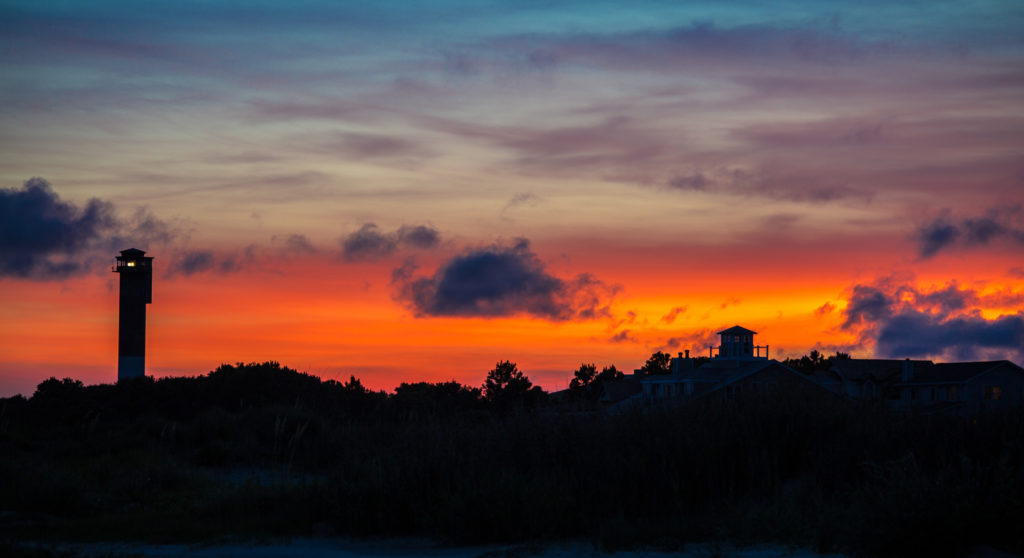
Here’s a magnificent sunset taken by a noted South Carolina photographer. Look for clues in the image and send your guess to feedback@statehousereport.com. And don’t forget to include your name and the town in which you live.
Our previous Mystery Photo
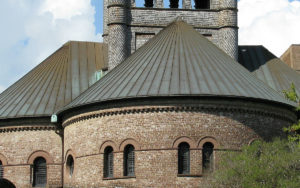 Wow! Our Jan. 4 mystery, “Another building with an interesting shape,” brought a boatload of responses from across the state. The photo, of course, wasn’t a castle, but was of the Circular Congregational Church in Charleston.
Wow! Our Jan. 4 mystery, “Another building with an interesting shape,” brought a boatload of responses from across the state. The photo, of course, wasn’t a castle, but was of the Circular Congregational Church in Charleston.
Congratulations to all who correctly identified the photo: Dwight Cauthen and Jay Altman, both of Columbia; Addison Ingle and Alfred Ray, both of Charleston; George Graf of Palmyra, Va.; Matthew Brady of North Charleston; Daniel Prohaska of Moncks Corner; Katharine D. Beard of Camden; Bob Stillwagon of Boiling Springs; Harvey Shackelford of Newberry; Philip Cromer of Beaufort; Gwen Strickland of Marion; David Taylor of Darlington; and Bill Segars of Hartsville.
Segars provided more context: “The congregation was established in 1681 and this Richardson Romanesque building was completed in 1892. It was designed by Robert S. Stephenson & Ernest S. Greene. Henry Oliver built it using many of the brick from the 1806 third building that burned. This building and the Parish House was listed in the National Register Nov. 7, 1973.”
Graf sent along some interesting information on two noted people buried in the church’s graveyard, according to the church: Arthur Peronneau (died 1774) and Richard Hutson (d. 1795). Perroneau may have been the first person to have been buried in the large brick vault in the center of the cemetery, while Hutson, his brother-in-law, may have been the most famous. He was Charleston’s first mayor, according to this website.
- Send us a mystery: If you have a photo that you believe will stump readers, send it along (but make sure to tell us what it is because it may stump us too!) Send to: feedback@statehousereport.com and mark it as a photo submission. Thanks.
S.C. ENCYCLOPEDIA
HISTORY: Artist Jonathan Green
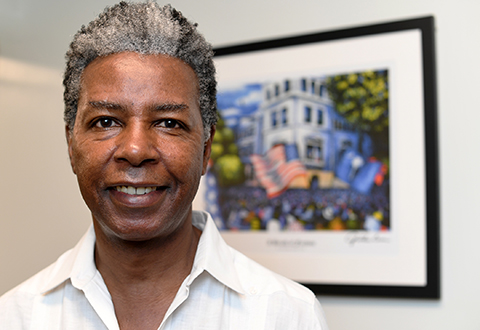
S.C. Encyclopedia | Born in rural Gardens Corner in Beaufort County on August 9, 1955, painter and printmaker Jonathan Green is the son of Melvin Green and Ruth Johnson. A graduate of Beaufort High School, Green served as a U.S. Air Force illustrator before enrolling as a textile design student at the East Grand Forks Technical Institute in Minnesota.
In 1976 he began his formal study of drawing and painting at the Art Institute of Chicago, earning a Bachelor of Fine Arts degree in 1982. He was awarded an honorary Doctor of Fine Arts degree by the University of South Carolina in 1996. While studying in Chicago, Green met his partner and business manager Richard Weedman. Weedman made it possible for Green to pursue independent study abroad to supplement his formal education. While traveling and visiting museums, Green realized that “the best artists are those who paint what they know best. It took a trip to Switzerland and Mexico to return me to Gardens Corner, South Carolina, and begin my body of work ‘Gullah life reflections.’”
Best known for depicting the people and landscape of the lowcountry, Green refers to memories of local African American traditions, as well as tales and stories told by members of his extended family and friends. The artist’s paintings reflect an authentic historical understanding of lowcountry culture, although he sometimes takes poetic license with his subject matter. Green’s lowcountry subjects may or may not be factually realistic, but they communicate a strong sense of conceptual accuracy.
Green’s mature style conveys a narrative historicity, simplicity of form, and passionate energy that has been favorably compared with African American masters such as Jacob Lawrence, Elizabeth Catlett, and Romare Bearden but might also be compared with classically modern Europeans such as Gauguin and Matisse. Green’s education at the Art Institute of Chicago raised his awareness of traditions in Western and non-Western art that utilize color as a symbolic element—one of the most important stylistic aspects of his work. Green’s work also subtly reflects his formal study of textile design and the contemporaneous influence of the Pattern and Decoration movement. Reaching maturity as an artist in the 1980s, he shared in the renewed interest in figurative painting among contemporary collectors and museums.
Coming on the heels of the second of four solo traveling exhibitions, the 1996 publication of Gullah Images: The Art of Jonathan Green brought Green’s work to a wider and more diverse audience. The artist has been invited to give one-person exhibitions in major museums nationwide and is represented in numerous private and public collections, including those of the Philharmonic Center for the Arts, Naples, Florida; the Morris Museum of Art, Augusta, Georgia; the Norton Museum of Art, West Palm Beach, Florida; the Gibbes Museum of Art, Charleston; and the McKissick Museum of the University of South Carolina, Columbia.
— Excerpted from an entry by Jay Williams. This entry may not have been updated since 2006. To read more about this or 2,000 other entries about South Carolina, check out The South Carolina Encyclopedia, published in 2006 by USC Press. (Information used by permission.)
ABOUT STATEHOUSE REPORT
Statehouse Report, founded in 2001 as a weekly legislative forecast that informs readers about what is going to happen in South Carolina politics and policy, is provided to you at no charge every Friday.
- Editor and publisher: Andy Brack, 843.670.3996
- Statehouse correspondent: Lindsay Street
More
- Mailing address: Send inquiries by mail to: P.O. Box 22261, Charleston, SC 29407
- Subscriptions are free: Click to subscribe.
- We hope you’ll keep receiving the great news and information from Statehouse Report, but if you need to unsubscribe, go to the bottom of the weekly email issue and follow the instructions.
- © 2019, Statehouse Report. All rights reserved.


